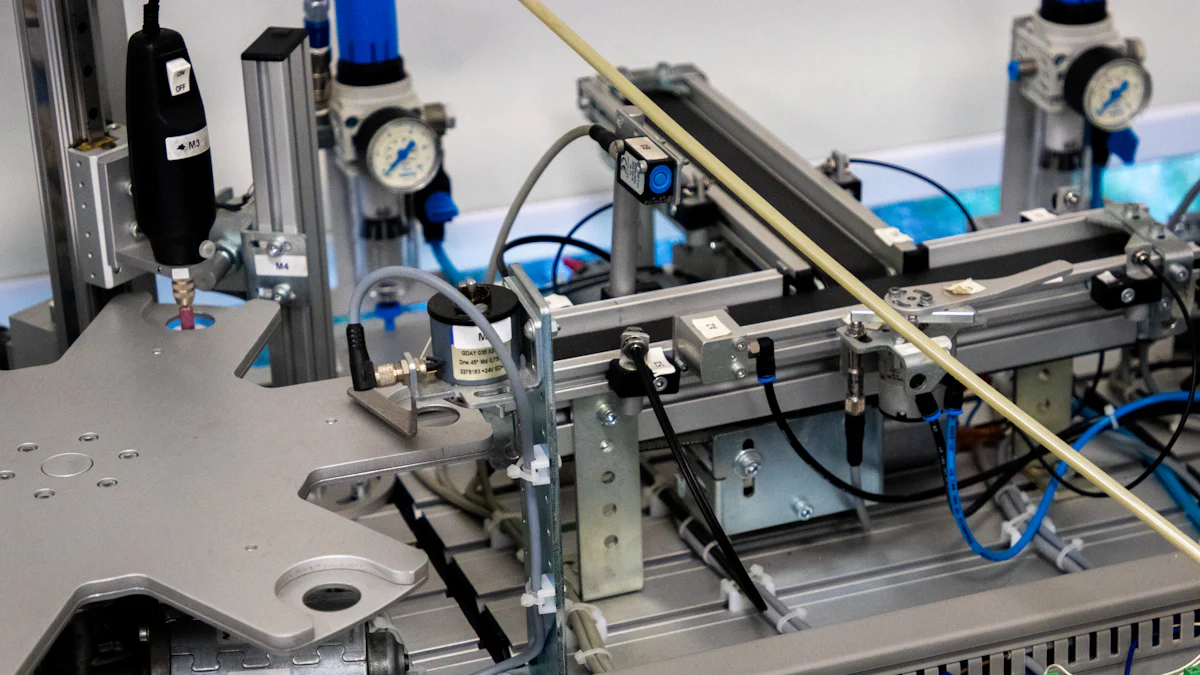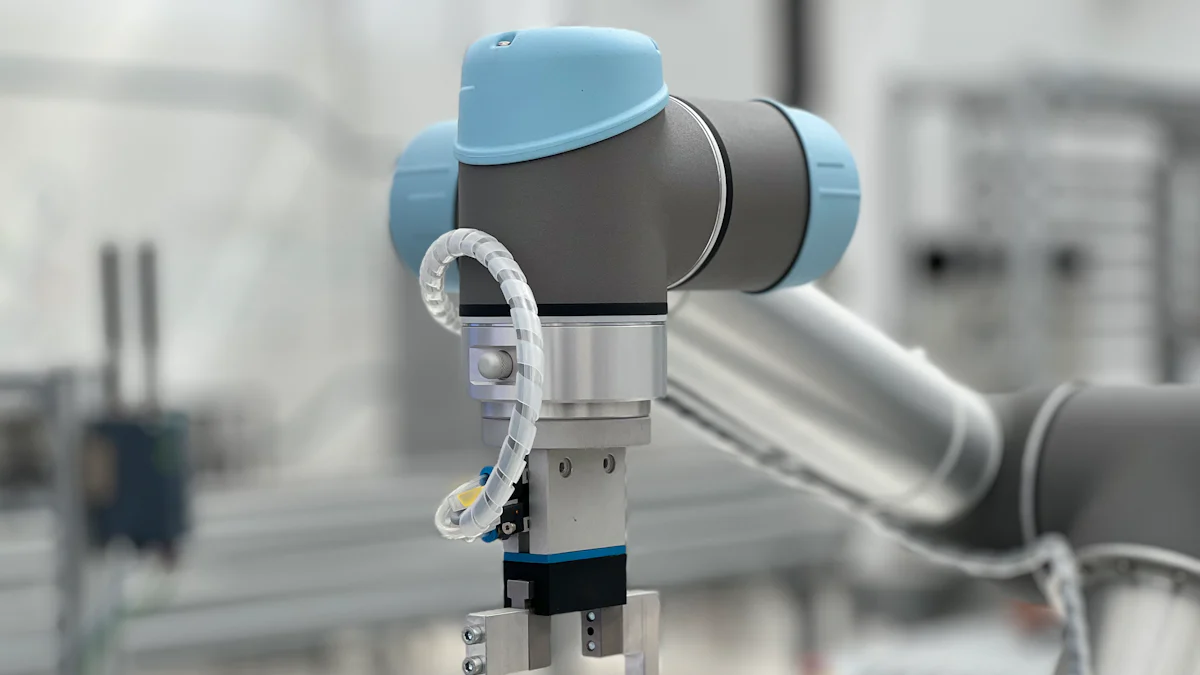How to Streamline Operations by Automating Business Processes

Automating business processes offers immediate benefits, such as increased efficiency and reduced errors. For instance, automation can cut down manual task time by 50%, according to 73% of IT leaders. This efficiency not only streamlines operations but also enhances overall business performance. By minimizing human errors, particularly in repetitive tasks, businesses can ensure accuracy and speed. Moreover, automation provides a competitive edge in today's fast-paced business landscape. Companies that automate can allocate more resources to innovation, ultimately delivering better services to clients and customers. To learn more about how to automate business processes effectively, reach out to us.
Choosing the Right Automation Tools and Technologies

Selecting the appropriate automation tools and technologies plays a crucial role in streamlining business operations. Companies must carefully evaluate their options to ensure they meet specific needs and objectives. This section will guide you through understanding your business requirements and exploring various automation platforms.
Understanding Your Business Needs
Before diving into automation, businesses should assess their unique requirements. Identifying the processes that need automation helps in choosing the right tools. For instance, if a company primarily deals with web applications, tools like Selenium might be ideal due to its robust capabilities in automating web browsers. It supports multiple programming languages, making it versatile for different teams.
Businesses should also consider the scale of their operations. Katalon Studio offers scalable solutions suitable for projects of all sizes. Its low-code nature allows teams to automate web, API, desktop, and mobile applications efficiently. By understanding these needs, companies can allocate resources effectively and ensure a smooth transition to automated processes.
Exploring Automation Platforms
Once businesses understand their needs, they can explore various automation platforms. BrowserStack stands out for its precision in cross-browser testing. It supports popular frameworks like Selenium and Cypress, enabling tests across a wide range of devices without altering code. This flexibility ensures that businesses can maintain consistency across different platforms.
Katalon Studio is another excellent choice, especially for those seeking comprehensive testing capabilities. It integrates seamlessly with CI/CD ecosystems, facilitating continuous integration and delivery. This integration ensures that businesses can automate their processes without disrupting existing workflows.
Starting Small with Automation Projects
Embarking on automation can seem daunting, but starting small offers a manageable path. By initiating with pilot projects, businesses can test the waters without overwhelming their systems. This approach allows teams to identify potential challenges and refine processes before full-scale implementation.
Pilot Projects and Testing
Pilot projects serve as a practical introduction to automation. They allow businesses to experiment with new tools and technologies on a smaller scale. For instance, a company might automate a single department's workflow to observe the impact. This method provides valuable insights into how automation affects productivity and efficiency.
"Thirty-two percent of companies experienced less human error after adopting workflow automation, which increased their overall productivity, efficiency, and accuracy."
Testing during pilot projects is crucial. It ensures that the chosen automation tools function as expected. Teams should monitor performance closely, noting any issues that arise. This phase helps in understanding the strengths and limitations of the automation tools in use.
Iterating Based on Feedback
Feedback plays a vital role in refining automation projects. After completing a pilot, businesses should gather input from all stakeholders involved. This feedback highlights areas for improvement and guides future iterations.
Teams should focus on addressing any challenges identified during the pilot phase. For example, if a tool did not integrate well with existing systems, exploring alternative solutions might be necessary. By iterating based on feedback, businesses can enhance their automation strategies.
Continuous improvement ensures that automation efforts align with business goals. As systems evolve, so should the automation processes. This adaptability leads to more efficient operations and better outcomes.
Starting small with automation projects allows businesses to learn and adapt. By focusing on pilot projects and iterating based on feedback, companies can build a strong foundation for future automation endeavors. For more guidance on implementing automation effectively, reach out to us.
Planning for Future Growth and Scalability
Designing Scalable Automation Solutions
Businesses must design scalable automation solutions to accommodate growth. Scalable solutions ensure that initial investments continue to yield benefits as the business expands. For instance, Fortra Automate outperforms other tools like Power Automate in scalability. It offers key enterprise security features, eliminating scalability challenges. This makes it an ideal choice for businesses anticipating rapid growth.
Scalability plays a crucial role in the effectiveness of business automation tools. Companies of all sizes benefit from tools that adapt to changing needs. Katalon Studio provides scalable support suitable for projects and teams of any size. It accommodates global testing requirements seamlessly, making it a versatile option for growing businesses.
To design scalable solutions, businesses should focus on flexibility. Automation tools must handle increased workloads without compromising performance. This adaptability ensures that systems remain efficient even as demands rise. By prioritizing scalability, companies can future-proof their operations and maintain a competitive edge.
Integrating with Emerging Technologies
Integrating automation with emerging technologies enhances scalability. Businesses should explore how new technologies can complement existing systems. For example, integrating AI and machine learning with automation tools can optimize processes. These technologies analyze data patterns, enabling more efficient decision-making.
Emerging technologies also offer opportunities for innovation. Companies can leverage advancements in IoT and blockchain to streamline operations. These technologies provide real-time data insights, improving accuracy and efficiency. By staying ahead of technological trends, businesses can enhance their automation strategies.
Security remains a top priority when integrating new technologies. Companies must ensure that automation solutions meet security standards. Scalable solutions like Fortra Automate offer robust security features, safeguarding data integrity. This focus on security ensures that businesses can expand without compromising sensitive information.
Incorporating emerging technologies into automation strategies prepares businesses for future challenges. By embracing innovation, companies can enhance scalability and drive growth. For more insights on integrating emerging technologies with automation, reach out to us.
Overcoming Common Challenges in Automation
Automation offers numerous benefits, but businesses often face challenges during implementation. Addressing these challenges ensures a smoother transition and maximizes the advantages of automation.
Addressing Resistance to Change
Resistance to change is a common hurdle in automation projects. Employees may fear job loss or struggle with new technologies. To overcome this, businesses should focus on communication and training.
Communicate the Benefits: Clearly explain how automation improves efficiency and reduces repetitive tasks. Highlight how it allows employees to focus on more meaningful work. This understanding can alleviate fears and foster acceptance.
Provide Training: Equip employees with the necessary skills to work alongside automation tools. Training sessions and workshops can build confidence and competence. Employees who feel prepared are more likely to embrace change.
Involve Employees in the Process: Engage employees in the automation journey. Seek their input and feedback during the planning and implementation phases. Involvement creates a sense of ownership and reduces resistance.
"As automation technologies continue to evolve, their adoption is expected to grow, further boosting workplace productivity and efficiency." - Expert in Automation and Workplace Productivity
Ensuring Data Security and Compliance
Data security and compliance present significant challenges in automation. Businesses must protect sensitive information and adhere to regulations.
Implement Robust Security Measures: Use encryption and access controls to safeguard data. Regularly update security protocols to address emerging threats. These measures protect against unauthorized access and data breaches.
Ensure Compliance with Regulations: Stay informed about relevant laws and regulations. Automation tools should comply with industry standards. Regular audits and assessments help maintain compliance.
Educate Employees on Security Practices: Train employees on best practices for data security. Awareness programs can prevent accidental breaches and ensure compliance. Employees play a crucial role in maintaining a secure environment.
By addressing resistance to change and ensuring data security, businesses can overcome common challenges in automation. These strategies pave the way for successful implementation and long-term benefits. For more insights on overcoming automation challenges, reach out to us.
Measuring the Impact of Automation
Analyzing Performance Metrics
Businesses must analyze performance metrics to measure the impact of automation effectively. These metrics provide insights into how automation influences productivity and efficiency. For instance, 86% of employees believe that automation enhances their ability to work efficiently, leading to improved productivity and growth. By examining these metrics, companies can identify areas where automation delivers the most value.
Key performance indicators (KPIs) play a crucial role in this analysis. Businesses should track metrics such as task completion time, error rates, and cost savings. These indicators reveal how automation streamlines operations and reduces operational costs. For example, marketing automation can increase lead quantity by 80% and conversions by 75%. Such improvements highlight the dual benefits of automation—boosting efficiency while cutting costs.
Regularly reviewing performance metrics ensures that automation aligns with business goals. Companies should set benchmarks and compare them against actual results. This comparison helps in understanding the effectiveness of automation tools and strategies. By focusing on data-driven insights, businesses can make informed decisions about future automation initiatives.
Continuous Improvement Strategies
Continuous improvement strategies are essential for maximizing the benefits of automation. Businesses should adopt a proactive approach to refine and enhance their automation processes. This involves regularly assessing current systems and identifying opportunities for optimization.
Feedback Loops: Establishing feedback loops allows businesses to gather input from employees and stakeholders. This feedback provides valuable insights into the strengths and weaknesses of automation tools. By addressing these areas, companies can improve their processes and outcomes.
Iterative Testing: Implementing iterative testing ensures that automation solutions remain effective over time. Businesses should conduct regular tests to evaluate the performance of their systems. This approach helps in identifying potential issues and implementing necessary adjustments.
Training and Development: Investing in training and development programs equips employees with the skills needed to work alongside automation tools. Continuous learning fosters a culture of innovation and adaptability. Employees who feel confident in using automation technologies contribute to more efficient operations.
"Automation is responsible for an increase in qualified leads by 451%." This statistic underscores the importance of continuous improvement in automation strategies. By refining processes and embracing innovation, businesses can achieve remarkable results.
Incorporating continuous improvement strategies ensures that automation efforts remain aligned with business objectives. By focusing on performance metrics and ongoing refinement, companies can drive growth and maintain a competitive edge. For more insights on measuring the impact of automation, reach out to us.
Case Studies of Successful Automation

Industry-Specific Examples
Automation has transformed various industries by enhancing efficiency and productivity. In the manufacturing sector, companies have implemented robotic process automation (RPA) to streamline assembly lines. These systems reduce manual labor and increase production speed. For example, automotive manufacturers use RPA to automate repetitive tasks like welding and painting. This automation ensures consistency and quality in the final product.
In the healthcare industry, automation plays a crucial role in managing patient data. Hospitals utilize automated systems to handle patient records and appointment scheduling. These systems minimize errors and improve patient care. By automating administrative tasks, healthcare providers can focus more on patient treatment and less on paperwork.
Retail businesses benefit from automation in inventory management. Automated systems track stock levels and predict demand patterns. This technology helps retailers maintain optimal inventory levels, reducing waste and ensuring product availability for customers. By leveraging automation, retail companies can enhance customer satisfaction and streamline operations.
Lessons Learned from Real-World Implementations
Real-world implementations of automation offer valuable insights for businesses. One key lesson is the importance of aligning automation strategies with business goals. Companies must identify specific areas where automation can deliver the most value. By focusing on targeted processes, businesses can maximize the benefits of automation.
Another lesson involves the need for continuous evaluation and adaptation. Automation is not a one-time solution. Businesses must regularly assess their systems and make necessary adjustments. This approach ensures that automation efforts remain effective and aligned with evolving business needs.
Collaboration between teams is essential for successful automation. Businesses should involve all stakeholders in the planning and implementation phases. This collaboration fosters a sense of ownership and reduces resistance to change. By working together, teams can identify potential challenges and develop effective solutions.
Finally, businesses must prioritize data security and compliance. Automation systems handle sensitive information, making security a top priority. Companies should implement robust security measures and ensure compliance with relevant regulations. This focus on security protects both the business and its clients.
Successful automation requires careful planning and execution. By learning from industry-specific examples and real-world implementations, businesses can enhance their automation strategies. For more insights on implementing automation effectively, reach out to us.
Encouraging a Culture of Innovation
Fostering an Automation-First Mindset
Businesses thrive when they embrace an automation-first mindset. This approach prioritizes the use of technology to streamline operations and enhance productivity. By automating repetitive tasks, employees can focus on more complex, value-driven work. This shift not only boosts efficiency but also reduces workplace stress and human errors.
To foster this mindset, companies should:
Educate Employees: Provide training sessions that highlight the benefits of automation. Employees should understand how automation can improve their work experience and contribute to the company's success.
Promote Success Stories: Share examples of successful automation projects within the organization. Highlight how these initiatives have led to increased productivity and innovation.
Encourage Experimentation: Allow teams to explore new automation tools and techniques. Encourage them to experiment with different approaches to find the best solutions for their specific needs.
"Automation boosts productivity by removing repetitive tasks and allowing employees to focus on more complex, value-driven work."
By fostering an automation-first mindset, businesses can create an environment where innovation thrives. Employees become more engaged and motivated, leading to better outcomes for the company.
Building a Collaborative Environment
Collaboration plays a crucial role in successful automation. When teams work together, they can identify opportunities for improvement and develop effective solutions. A collaborative environment encourages open communication and the sharing of ideas.
To build such an environment, businesses should:
Facilitate Cross-Departmental Collaboration: Encourage teams from different departments to work together on automation projects. This collaboration allows for diverse perspectives and innovative solutions.
Create Open Channels of Communication: Establish platforms where employees can share their ideas and feedback. Regular meetings and brainstorming sessions can foster a culture of openness and creativity.
Recognize and Reward Collaboration: Acknowledge the efforts of teams that successfully implement automation projects. Recognition can motivate others to engage in collaborative efforts.
"Automation software streamlines workflows by taking over repetitive, time-consuming tasks, allowing employees to focus on higher-value activities."
By building a collaborative environment, businesses can harness the collective expertise of their teams. This approach leads to more effective automation strategies and a culture of continuous improvement. For more insights on fostering innovation through automation, reach out to us.
Automating business processes offers numerous benefits, including improved efficiency, reduced costs, and enhanced productivity. By minimizing repetitive tasks and errors, automation enables employees to focus on strategic activities that drive business growth. Companies should take actionable steps to implement automation, ensuring they remain competitive in a rapidly evolving market. Continuous evaluation and adaptation of automation strategies are crucial for long-term success and scalability. Businesses can optimize their operations and achieve significant growth by embracing automation. For more insights on implementing automation effectively, reach out to us.



